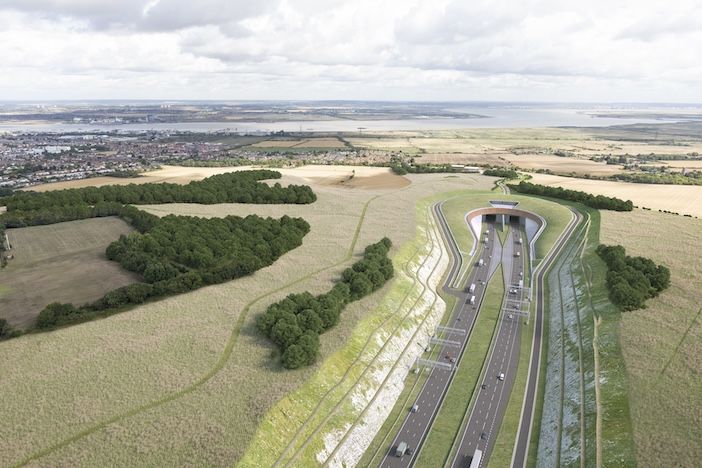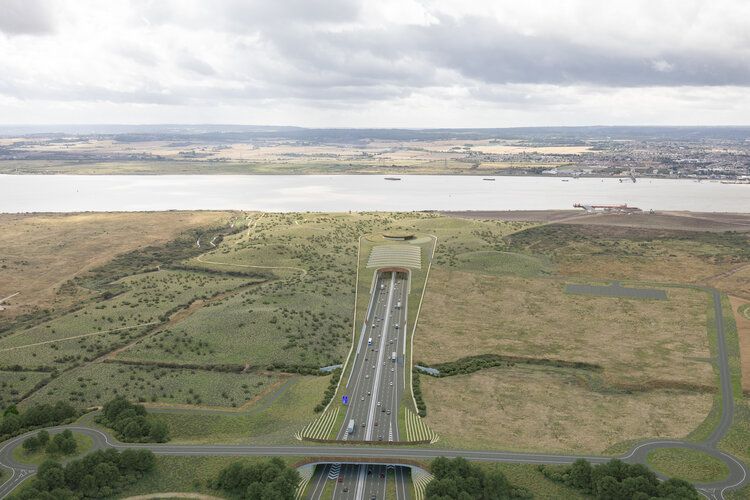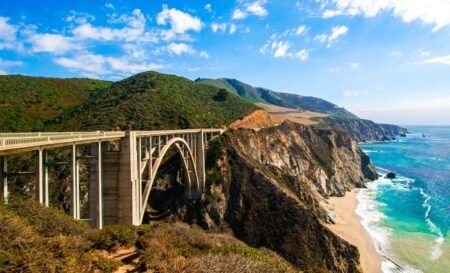After years of planning the UK Government has granted permission for National Highways’ £9bn Lower Thames Crossing project.
The project aims to alleviate congestion at Dartford and improve connectivity between the south-east, midlands, and north. The Lower Thames Crossing will link Tilbury, Essex, and Gravesend, Kent, via two tunnels running underneath the River Thames, making it the longest road tunnel in the UK.
The 14.5-mile road will connect the A2 and M2 in Kent with the A13 and M25 in Thurrock. Approximately 2.6 miles of the route will be underground, with northbound and southbound tunnels running parallel beneath the Thames. National Highways anticipates that the road will reduce traffic at the Dartford Crossing by 20% and open by 2032.
“The Lower Thames Crossing is one of the UK’s most important infrastructure projects,” says Matt Palmer, executive director for the Lower Thames Crossing. “It will unlock growth with quicker, safer, and more reliable journeys and redraw the blueprint for building major projects in a net zero future by scaling up the use of low-carbon construction and leaving a legacy of green spaces, green skills.”

The project has been in development since 2009, with over £1.2bn spent on planning. The application was submitted to the Planning Inspectorate on 31 October 2022, and a recommendation for approval was made to Secretary of State for Transport Heidi Alexander on 20 March 2025. Construction is expected to begin in 2026, with main works taking six to eight years and supporting up to 22,000 jobs.
The road building is planned to be the lowest-carbon construction project ever undertaken in the UK with National Highways planning to use low-carbon construction methods, including hydrogen-powered construction fleets and low-carbon concrete and steel, aiming for a 70% reduction in the project’s estimated construction footprint.
The project will also restore nature across Kent and Essex by delivering six times more green space than road, including one million additional trees, a new community woodland, and two new public parks overlooking the Thames.

“For far too long governments have dodged making a decision on the Lower Thames Crossing, leaving Dartford residents to endure endless gridlock. This decision will unlock economic growth across the country and finally deliver a solution to the traffic chaos faced by my constituents on a daily basis,” says Jim Dickson, Labour MP for Dartford.
Environmental campaigners have raised concerns about the project’s impact on ancient woodland and pollution. Chris Todd, director of Transport Action Network, called the decision “absolute madness,” stating, “Rather than boosting growth, this will clog up roads in the south-east and slow the economy down even more.”
The government is exploring private finance options for the project, with tolls expected to recoup some of the official £8.95bn baseline cost estimate at 2023 prices. Chancellor Rachel Reeves has indicated that the private sector could help deliver the infrastructure, stating, “The private sector could help to deliver the infrastructure that our country desperately needs.”
Construction will involve working with local authorities, landowners, and stakeholders to refine the design and reduce the impact on the local community and environment. Archaeological, ecological, and topographical surveys, as well as further ground investigations, will be conducted to prepare detailed design and construction plans.




